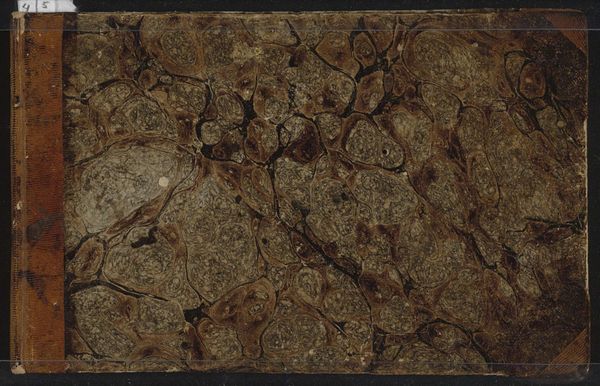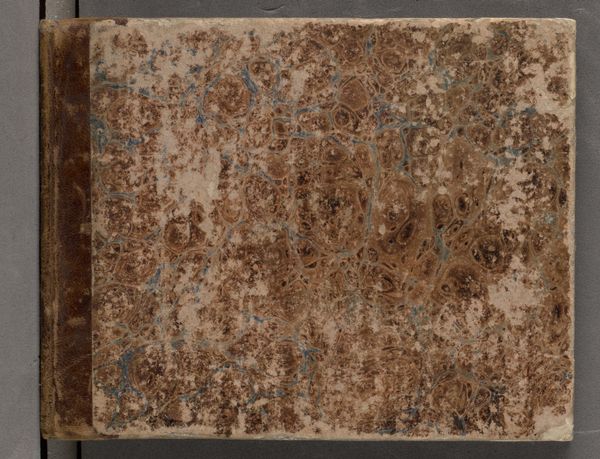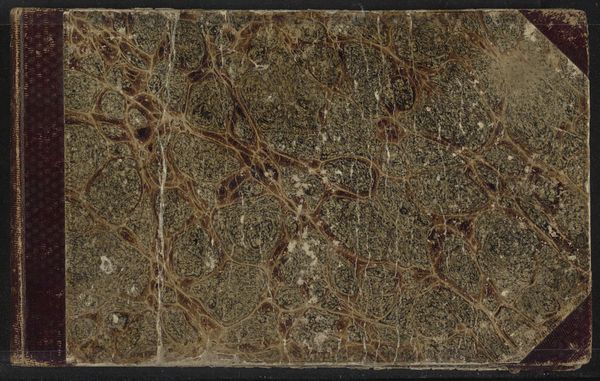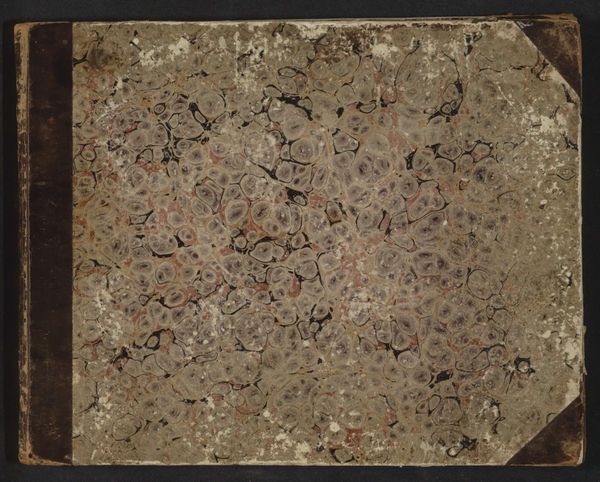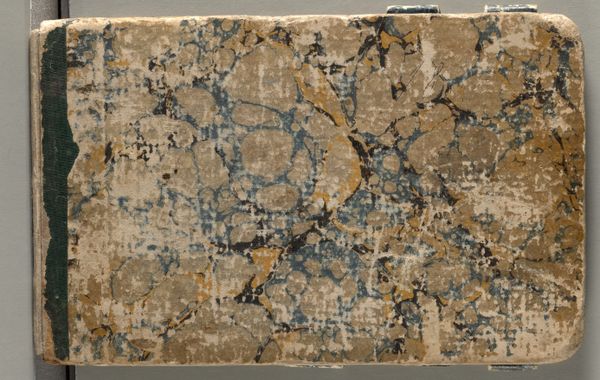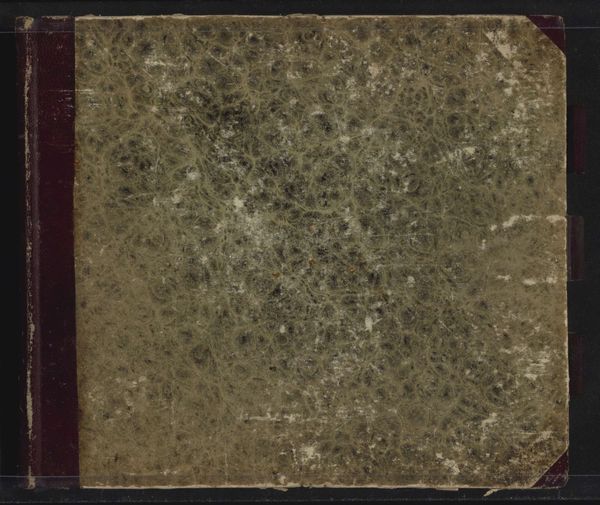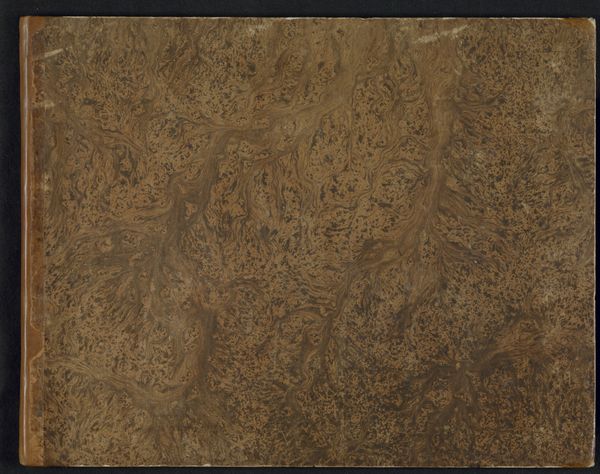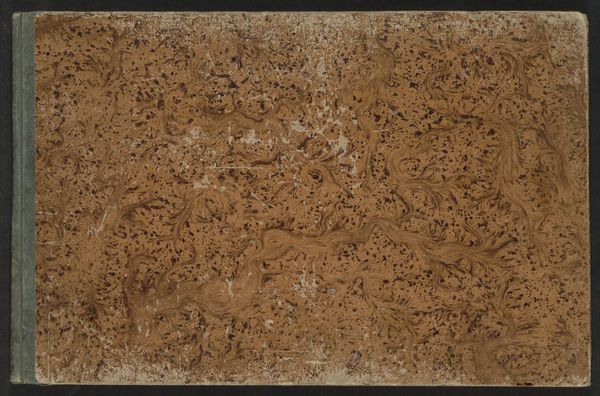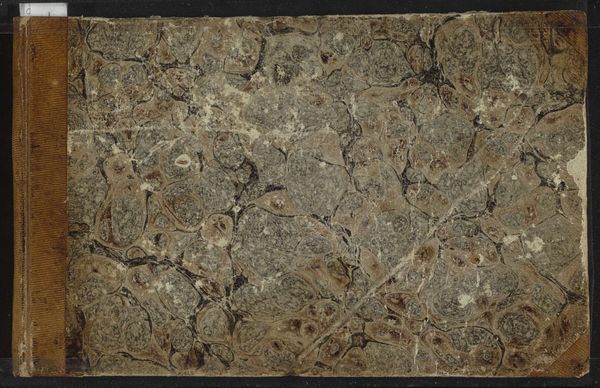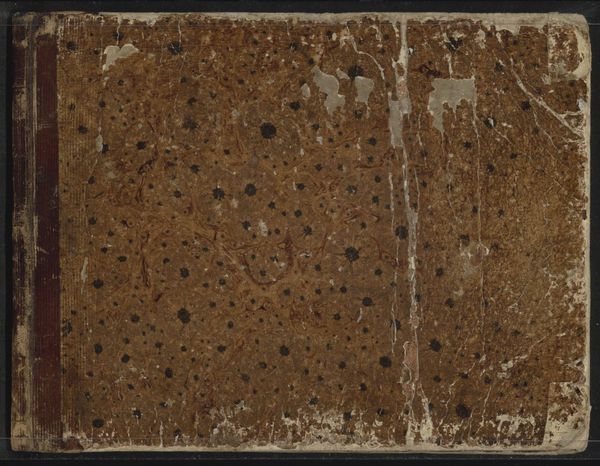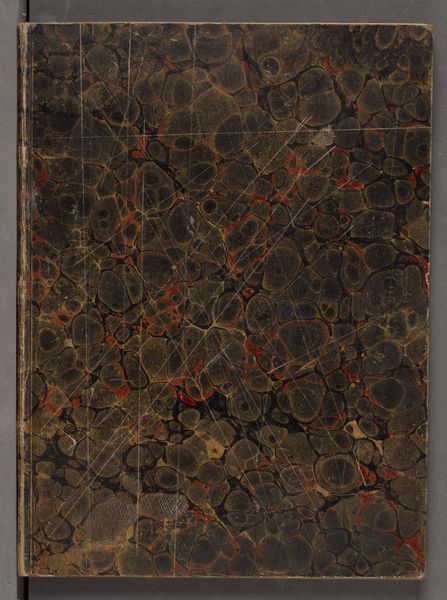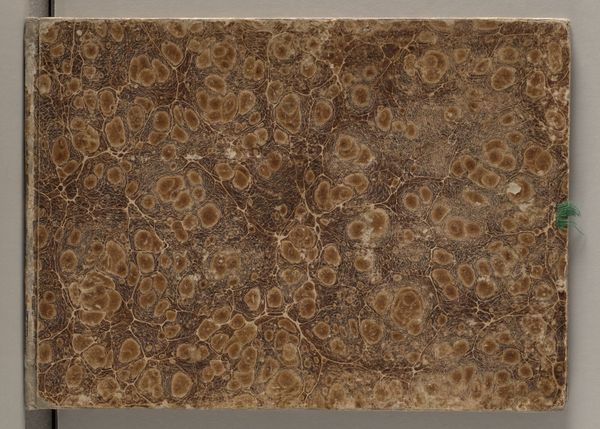
drawing, paper
#
drawing
#
toned paper
#
16_19th-century
#
muted colour palette
#
paper texture
#
paper
#
chalky texture
#
german
#
decorative-art
#
watercolor
Copyright: Public Domain
Editor: This is *Skizzenbuch* by Friedrich Metz, likely from 1844. It’s housed at the Städel Museum. The cover, with its swirling browns and faint blues and reds, feels very textured and almost…geological, like looking at old stones. What do you see in this object? Curator: Intriguing! My initial read focuses on the surface’s organization. Observe how the marbling technique structures the composition, creating a network of pseudo-cells, contained, yet boundless. Consider, too, the tension between the muted color palette, creating a subdued aesthetic, and the almost energetic patterning. Do you perceive how the lack of a central focal point compels the eye to wander, exploring the tactile qualities of the paper? Editor: I do. The evenness of the pattern is both calming and subtly restless. I also noticed that some areas are more worn than others. Does that aging affect the artwork itself, or is it just part of the object's history? Curator: That's a valuable observation. The wear, the disintegration of the surface, undeniably becomes integral to our understanding. It disrupts the initial patterning and contributes a new layer of information. The aging creates a dialogue between the intended design and the effects of time, complicating its original formal structure. Editor: So, even damage can become a part of the artwork’s statement, complicating the artist's original intent. Curator: Precisely! The randomness of degradation introduces chance and transformation into a composition. Editor: Thanks! That was fascinating; it really reframed how I see the piece. Curator: My pleasure. Remember, attentive viewing reveals untold layers of structural significance.
Comments
No comments
Be the first to comment and join the conversation on the ultimate creative platform.

